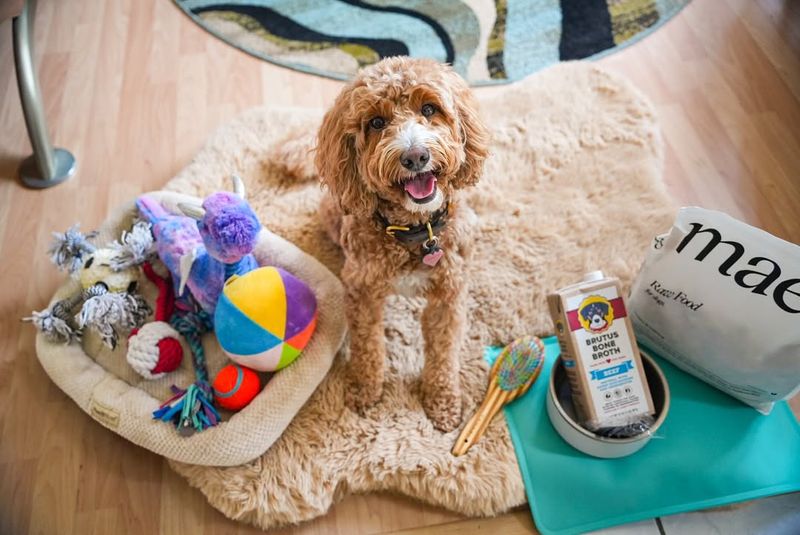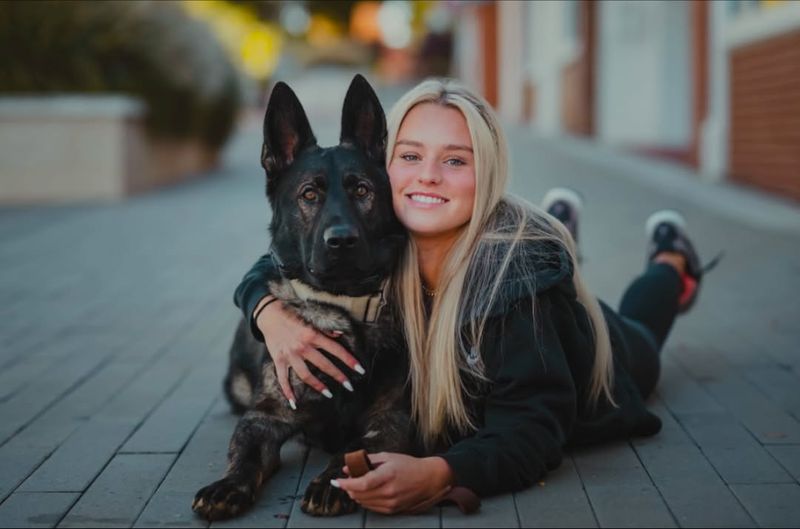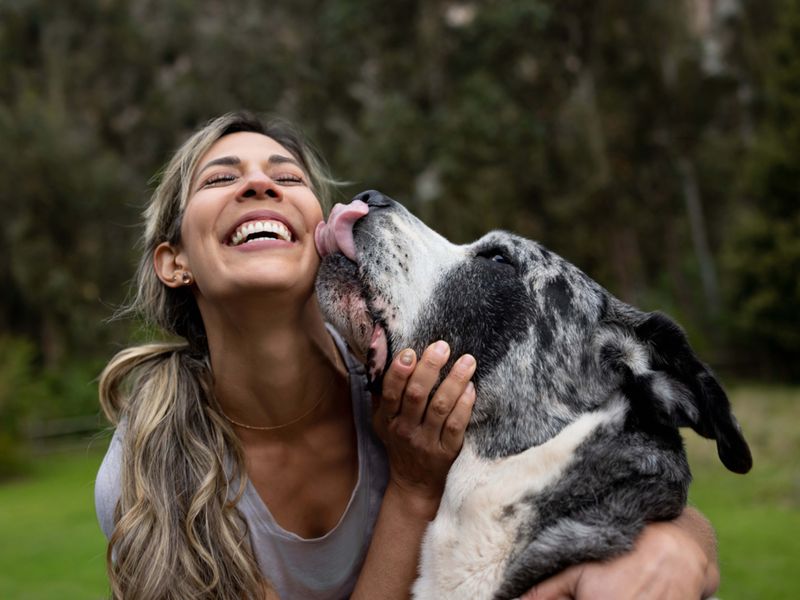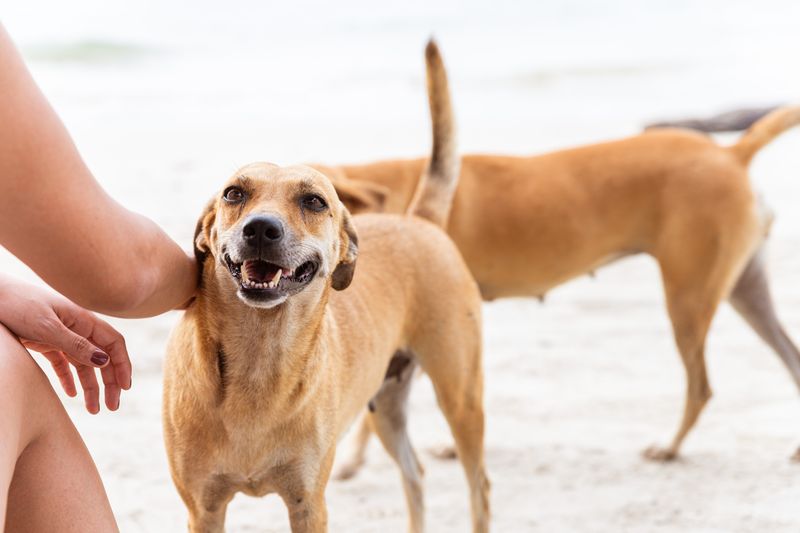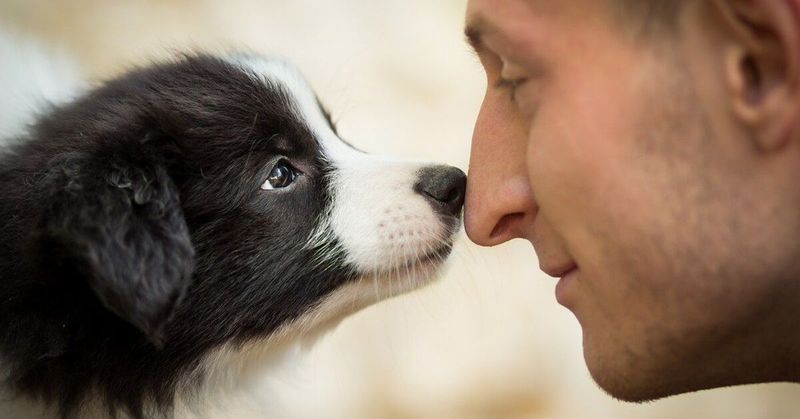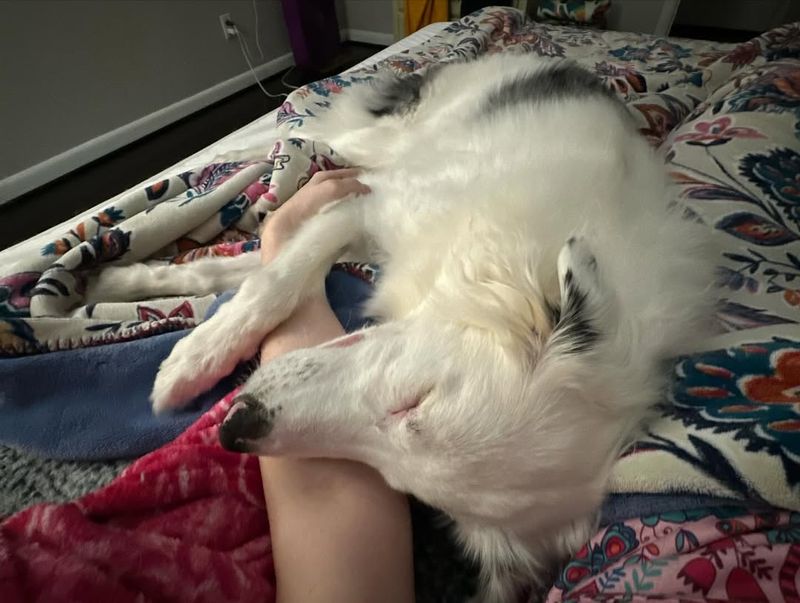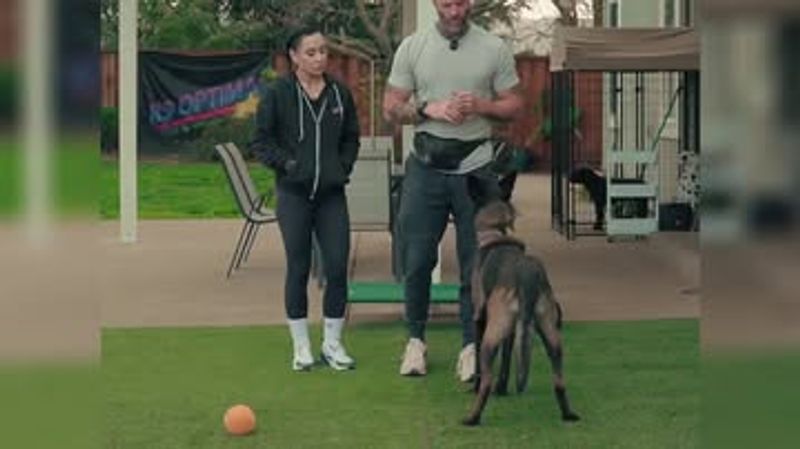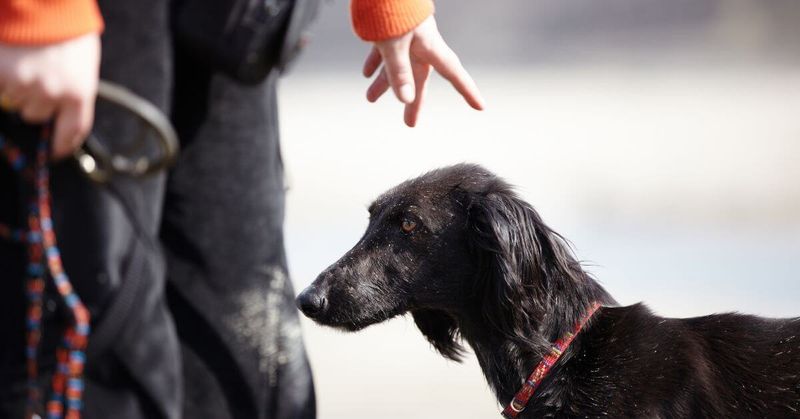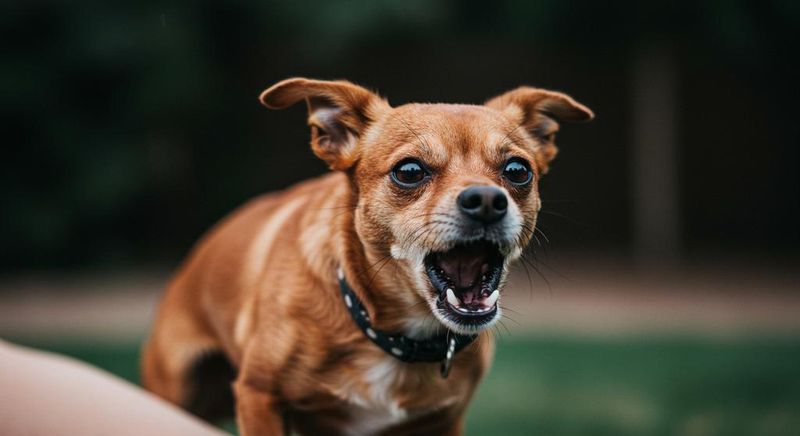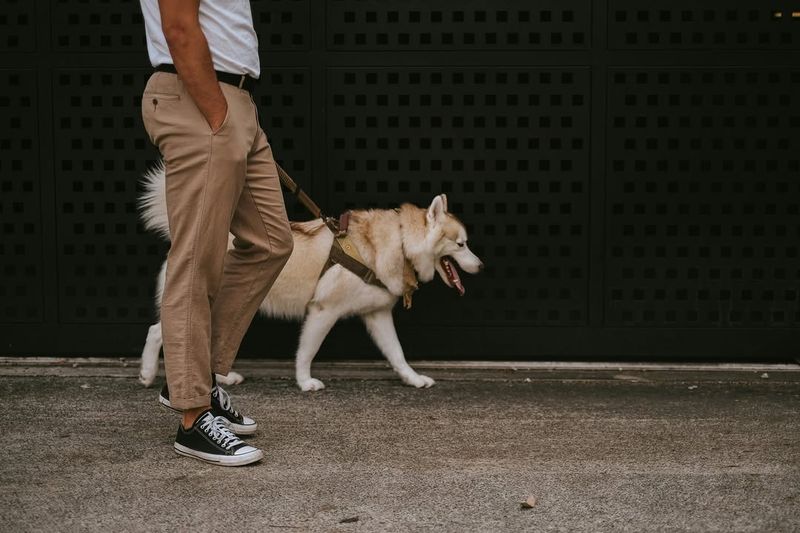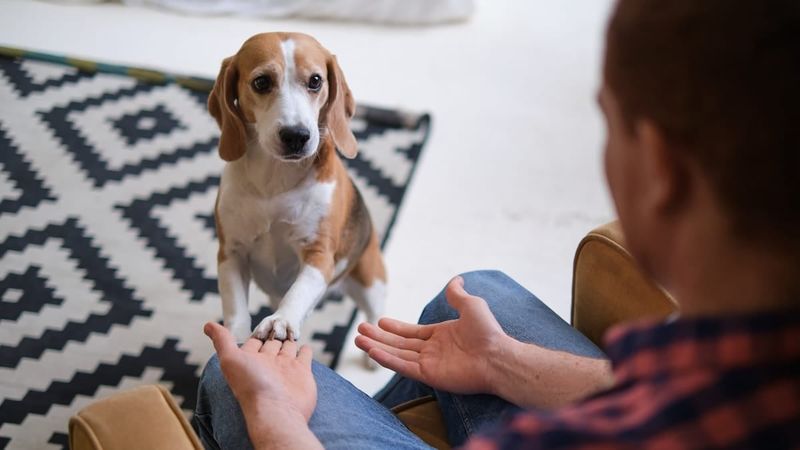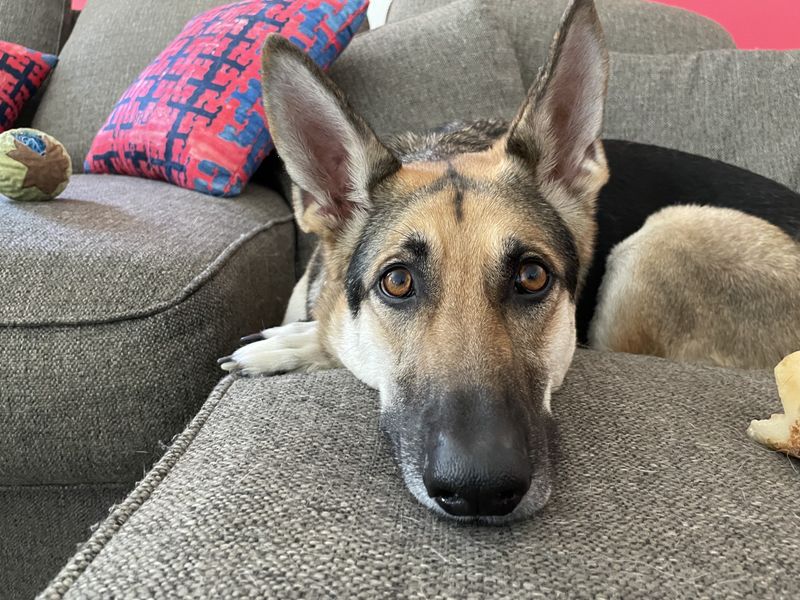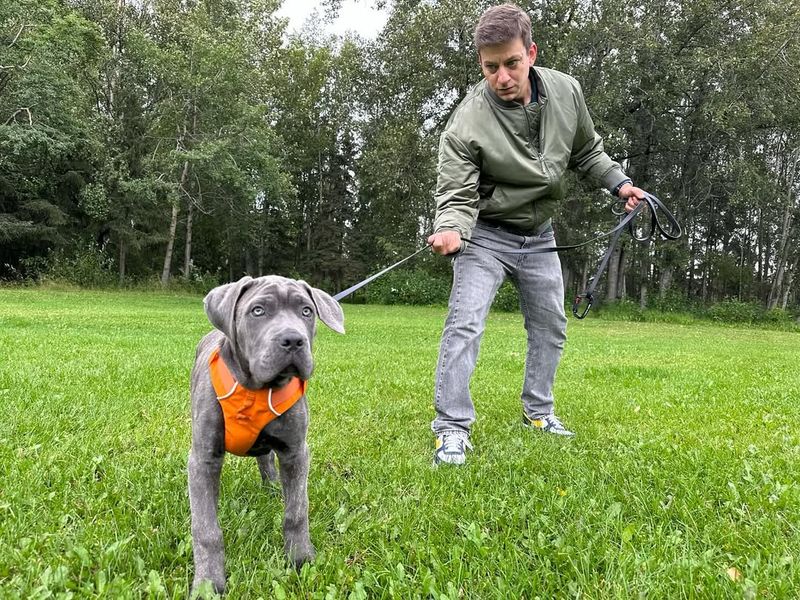Dogs have been adored by humans for centuries, and their behaviors often speak volumes about their emotions and intentions. While some gestures express love and affection, others might suggest a desire to take the reins. Understanding these actions can deepen the bond between owner and dog.
Leaning On You
When a dog leans on you, it’s a heartwarming gesture of trust and love. This behavior shows they feel secure in your presence. It’s as if they’re saying, “I trust you to keep me safe.”
In moments of uncertainty or when seeking comfort, dogs find solace in leaning on their humans. This action strengthens the bond and reinforces a sense of companionship.
Moreover, it is a silent yet profound expression of their affection. Embracing these moments can deepen the mutual trust and understanding between you and your dog.
Bringing You Their Toys
Dogs often share their toys to show affection, inviting you into their world. When a dog offers its favorite toy, it’s a sign of love and inclusion.
This gesture indicates they trust you and want to share their joy. It’s a delightful way for them to engage and bond.
Playing together further nurtures this connection. By accepting their playful invitation, you’re reciprocating their affection. Understanding this sweet behavior can enhance the companionship and joy shared between you and your furry friend.
Following You Around
A dog’s loyalty is often demonstrated by following you around. This behavior signifies their love and desire to be near you.
They cherish your presence and feel secure when close. It’s a testament to the bond shared, often accompanied by wagging tails and joyful expressions.
For some, this might feel overwhelming, but it’s a true reflection of their affection. Embrace these moments, understanding that their world revolves around being close to you. Each step they take beside you is a step filled with love.
Licking You
Licking is an age-old gesture of affection in dogs. When a dog licks you, it’s their way of showing love and attachment.
This behavior is reminiscent of how they bond with their mothers and siblings. It’s soothing for them and a way to express their fondness for you.
While it might tickle or seem slobbery, it’s a sincere expression of their connection. Recognizing this gesture can help you appreciate the depth of their loyalty and affection. Licking remains one of the purest forms of doggy love.
Tail Wagging
With a wag of their tail, dogs express many emotions. When a dog wags its tail loosely and joyfully, it signifies love and contentment. It’s a universal symbol of happiness.
In contrast, a stiff, high-held tail might not convey the same warmth. Observing the wag’s nature can reveal your dog’s feelings. A tail wag accompanied by a relaxed body is a loving, warm gesture.
Moreover, understanding their tail language is pivotal. It’s not merely about movement but the context surrounding it. This behavior showcases their innate ability to communicate affectionately.
Nuzzling You
Nuzzling is a tender way dogs communicate affection. When a dog nuzzles, it’s a sign of trust and love. This behavior often occurs during calm, relaxed moments.
Dogs use nuzzling as a form of bonding, similar to cuddling. It’s their way of seeking closeness and warmth from their human companions.
Understanding this gesture reveals a lot about your dog’s emotional state. It’s a simple act that speaks volumes, strengthening the bond shared. Embrace these soft nuzzles as they represent the love your pet holds for you.
Sleeping Close To You
When a dog chooses to sleep near you, it’s a heartwarming testament of trust and love. This behavior signifies security and attachment, as they feel safe in your presence.
Dogs have a natural instinct to stay close to those they love. It’s a bonding moment, wrapped in warmth and affection.
Moreover, this closeness during rest symbolizes their comfort level with you. Understanding this gesture allows you to appreciate the depth of their trust. Cherish these moments, as they reflect the strong connection you share with your furry friend.
Jumping On You
While some might find it overwhelming, a dog jumping on you is often an exuberant show of affection and excitement. They are thrilled to see you, expressing joy through this energetic greeting.
This behavior is their way of getting closer, craving attention and interaction. It’s a lively demonstration of their love and happiness.
However, managing this behavior is essential to ensure it’s appropriate and safe. Recognize it as a positive expression of their bond with you, one filled with enthusiasm and emotion.
Ignoring Commands
When dogs defer commands, they might be asserting authority. This behavior often points to a desire for control. Dogs may challenge boundaries by selectively listening, showcasing their independence.
Inconsistent obedience can be a sign of them trying to take charge. Understanding the dynamics of this behavior is crucial.
Correcting it through consistent training and establishing clear boundaries helps reassert your position as the leader. It’s essential to address this behavior to maintain a balanced relationship, where they understand their place within the family structure.
Barking Excessively
Excessive barking often indicates a dog trying to dominate their environment. This behavior can be their way of controlling the space they occupy.
Barking is a natural way for dogs to communicate, but excessive, unsolicited barking can suggest they’re asserting themselves. It can be a sign of them feeling in control.
Addressing this requires understanding triggers and setting boundaries. It’s essential to respond appropriately to manage this behavior and maintain harmony. Recognizing it as a control tactic helps in guiding them towards more balanced communication.
Stealing Food
Stealing food is a clear sign of a dog trying to take charge. This behavior indicates they’re testing limits and asserting dominance over resources.
It’s a challenge against the established order, showcasing their desire to be in control. This act is often driven by instinct and curiosity.
Addressing it involves setting clear rules and ensuring they understand boundaries. By managing this behavior, you reinforce your leadership and prevent it from becoming a habitual issue. It’s an opportunity to guide them towards understanding their role within the family.
Guarding Objects
When a dog guards objects, it’s a sign of asserting control. This behavior indicates they’re feeling possessive and dominant over certain items.
It’s a display of authority, often resulting in defensive actions if challenged. Understanding this behavior involves recognizing their need for control.
Correcting it requires patience and setting clear expectations. By addressing this, you reinforce boundaries and leadership. It’s essential for maintaining a harmonious environment, where they understand their place within the hierarchy. Recognizing and managing this behavior ensures a balanced relationship.
Pulling on the Leash
When a dog pulls on the leash, it might be trying to lead. This behavior is a sign of them asserting their preference and desire to be in control.
It’s an expression of independence, indicating they’re attempting to dictate the walk’s direction. Addressing this requires consistent training and guidance.
By establishing yourself as the leader on walks, you reinforce boundaries and ensure a more enjoyable experience. Understanding this behavior helps in guiding them towards more cooperative walking habits, fostering a balanced relationship. It’s a step towards mutual respect.
Demanding Attention
Dogs that constantly demand attention might be asserting dominance. This behavior indicates they’re used to getting their way, expecting immediate responses.
It’s a demonstration of control, where they dictate interaction terms. Recognizing this helps in setting boundaries and ensuring balanced attention.
Establishing a routine where attention is given on mutual terms reinforces leadership. This approach ensures a more harmonious relationship, where their demands are balanced with your expectations. It’s crucial to guide them towards understanding shared attention dynamics, fostering mutual respect.
Ignoring Personal Space
Dogs that ignore personal space often display dominance. This behavior indicates their desire to control interactions and environment.
Ignoring cues for personal boundaries showcases their intent to be in charge. Addressing this involves reinforcing boundaries and teaching respect for space.
It’s important to guide them towards understanding shared spaces and mutual respect. By setting clear expectations, you ensure a balanced relationship, where they comprehend boundaries effectively. Managing this behavior helps maintain harmony and fosters a respectful environment for both of you.
Resisting Training
When dogs resist training, it’s often a sign of asserting authority. This behavior indicates a challenge to the established hierarchy, showcasing their desire to be independent.
Understanding this involves recognizing their need to test boundaries. Addressing it requires patience and consistent reinforcement of leadership.
By guiding them through structured training, you reinforce your role and help them understand their place. It’s an opportunity to strengthen communication and trust. Recognizing and managing resistance ensures a harmonious dynamic, where they acknowledge your guidance and embrace learning.


